WITH MILLIONS OF VOLUMES in its collections, the UC Berkeley Library is a virtual treasure trove. But we had to ask the people who know the Library’s materials the most: What are your favorite items in the collections? Answers ranged from larger-than-life tomes to an eye-popping novel, from an early writing by Mark Twain to an original musical sketch by Beethoven. Here’s what we learned.
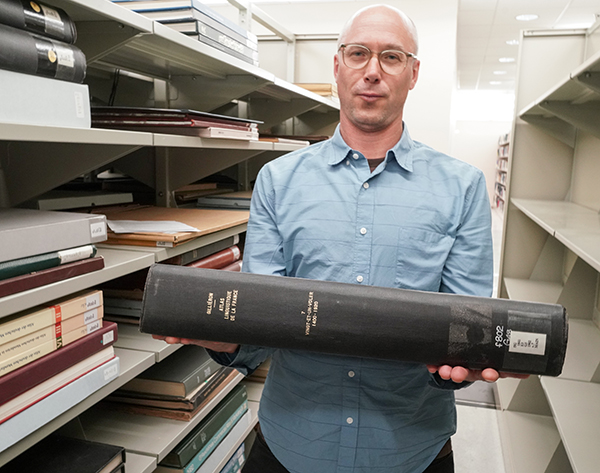
“If you go down to (Level D) in the folio section (of Main Stacks, in Doe Library), you will encounter undoubtedly the largest books in our collection,” says Claude Potts, romance languages librarian. Folios are unusually tall books, often used to highlight the intricate details of maps, art, and architecture. Some folios, such as double elephant folios, can measure up to 4 feet long. Here, Potts is holding a linguistic atlas that shows how word pronunciations differ across regions of France.

“I don’t have so much favorite items as I do favorite happenings,” says Bob Hirst, general editor of the Mark Twain Project. Thirty-five years ago, Hirst was flipping through the Clemens family Bible, which Twain’s mother had used as a kind of filing cabinet. In it, Hirst stumbled upon a scrap of paper that he believes Twain printed as a young typing apprentice. “If that’s correct (and I believe it is) it became the oldest piece of paper we knew he had actually ‘written’ anything on,” Hirst says. Why was the scrap of paper in the family Bible? Because Jane Clemens, "like all mothers everywhere, at all times, kept the 'art work' of her children as mementos of their youth," says Hirst. "So it didn't solve any big problem or give any huge insight into Huck Finn, but it did tell us something about his mother and her attitude toward Sam, who had refused to go to school and had therefore been apprenticed to a printer to keep him out of trouble."
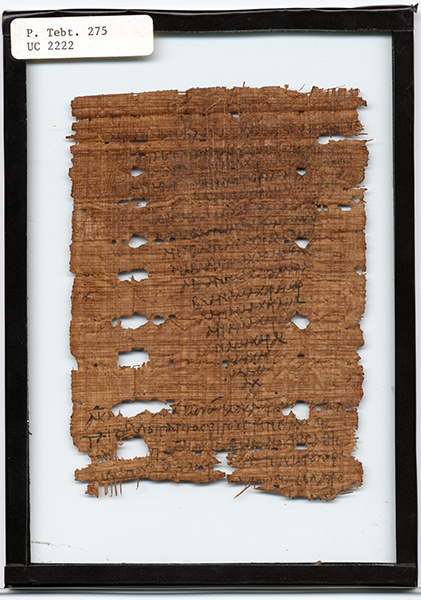
In the late 19th century, archaeologists, with funding from Phoebe Hearst, discovered a trove of manuscripts from the Ptolemaic period in Tebtunis, Egypt. Today, The Bancroft Library’s Tebtunis papyri collection is one of the largest such collections in the world, according to Peter Hanff, Bancroft’s deputy director. This manuscript, from around A.D. 200, was worn as an amulet protecting against fever, and addresses a deity called Kok Kouk Koul with a pattern of “magic” words.

Oracle bone fragments, dating back as far as 1400 B.C., bear the oldest written scripts in Chinese, says Peter Zhou, director of the East Asian Library. During the Shang Dynasty, diviners would carve questions into turtle shells and ox shoulder blades and heat them. The resulting cracks were interpreted as answers from gods.
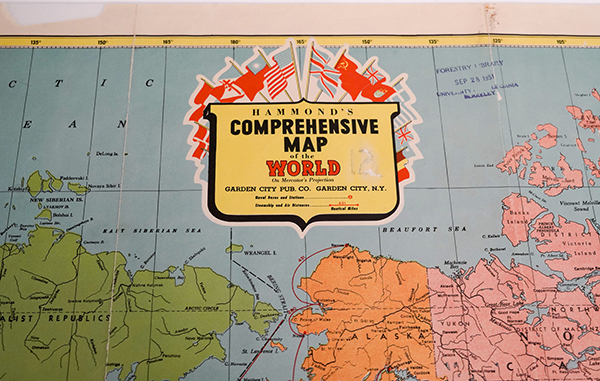
Hammond’s Comprehensive Map of the World: On Mercator’s Projection (1942) features cutout flags that indicate military movements, battle scenes, and military-occupied areas. “It was a map for people at home to follow troop movements, battles, and front lines,” says Susan Powell, geographic information systems and map librarian. “I love it as a reminder that interactive maps are not a new phenomenon and that they can be such a powerful way of synthesizing information.”
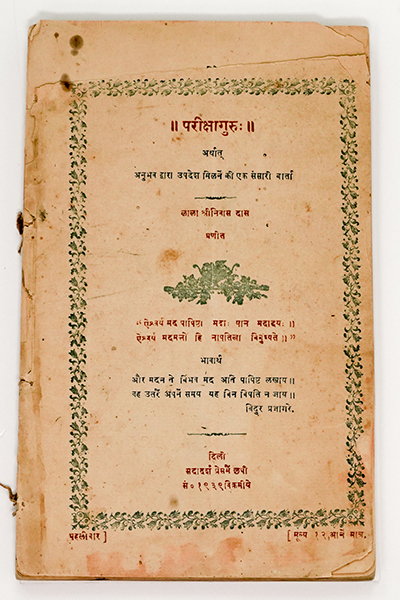
The South/Southeast Asia Library is the only library in the country with a first-edition copy of Parīkshāguruh (1882), known as the very first novel in Hindi. The novel, written by Śrīnivāsadāsa, was meant to teach middle-class men in 19th-century British India how to embrace modern knowledge and technology while keeping traditional Hindu moral values. “It is a very rare item and is a real feather in the cap of our already comprehensive and extensive collection on Hindi literature,” says Adnan Malik, curator and cataloger for the South Asia collections.

Mathematics Statistics Library. QA31 .E875 2010
“This isn’t a very unique item — it’s fairly widely held — but Oliver Byrne’s 1847 edition of The First Six Books of the Elements of Euclid is really beautiful,” says Brian Quigley, head of the Engineering & Physical Sciences Division. The textbook uses bright colors and simple diagrams to teach geometric principles. Bancroft has a copy of the original 1847 edition, and the Math Library has a circulating reproduction.

This original sketch of Ludwig van Beethoven’s Sixth String Quartet (1799) shows Beethoven “in the heat of inspiration, quickly writing down his first thoughts for the music so he will not forget them,” says John Shepard, curator of music collections. “Beethoven wrote this sketch for himself — not for others — so his notation is difficult to decipher, even for musicologists.”
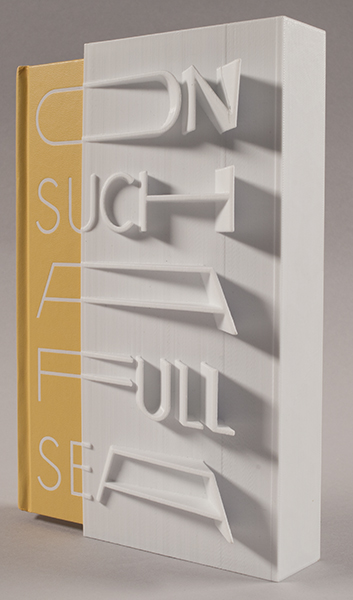
Chang-rae Lee’s dystopian novel, On Such a Full Sea (2014), is the first book to feature a 3-D-printed cover — and Bancroft has a limited, signed edition of it. For Stacy Reardon, literatures and digital humanities
librarian, the cover reveals how technology can transform physical books into art.

This image of Mary in Sergio Sánchez Santamaría’s Cuaresma en la región Cuautla, Morelos (2015) celebrates the sixth Friday of Lent, before Palm Sunday, in the artist’s native town of Tlayacapan, Mexico. “To me, the piece is emblematic of the old and the new at Bancroft,” says José Adrián Barragán-Álvarez, curator of Latin Americana, which focuses on Mexican and Central American history. “Sergio’s work demonstrates the lasting legacy of these religious traditions.”
A previous version of this article incorrectly identified the location of the folios. In fact, they are on Level D of Main Stacks, in Doe Library.